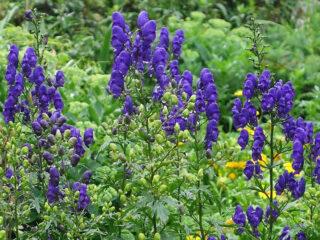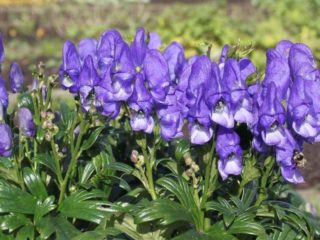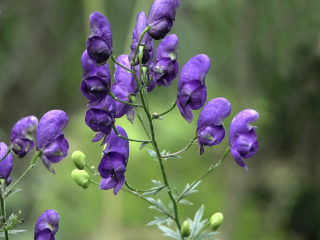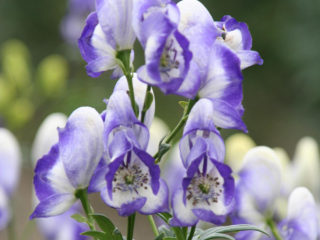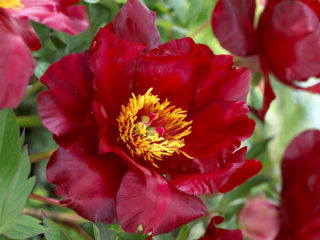Content
Aconite curly has many names: skullcap, wrestler, wolf or wolf root. Greece is considered to be the homeland of the plant. In Russia, it was called the royal potion because of the poisonous juice.
Description of curly aconite
The plant is poisonous because of the alkaloids it contains. The substances have an effect on the central nervous system, causing paralysis of the respiratory center and convulsions.
Important! The farther south the curly aconite grows, the more poisonous it is. In northern countries, the concentration of poison is much lower.
Aconite curly is a perennial, belongs to the Borets genus, the Buttercup family.
The flower tubers are varied in shape: from fusiform to ovoid, small, up to 2.5 cm long, up to 1.3 cm thick.
The stem of the plant is curly, the upper part is more sinuous. The height of the climbing aconite varies from 45 cm to 4 m. The stem is strong, with weak pubescence or glabrous.
Leaf plates are from 3 to 9.5 cm long, from 5 to 15 cm wide. In structure, complex, five-dissected, pinnately incised or ovate-lanceolate. The lobules are serrated, sometimes leaves are found, where the primary lobes are located on the petioles.
The flowers of curly aconite are large, 2-3 cm long, dark blue in color, collected in a brush or panicle, reaching a length of 12-20 cm. The flower's helmet has a rounded-conical shape. Nectars on straight or curved marigolds, with slightly rounded tops.
Leaflets are slightly pubescent. Seeds are compressed-triangular, ribbed, with a serrated border.
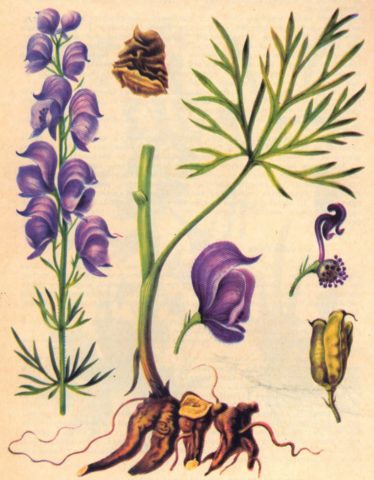
Aconite curly flowers appear at the end of July or the first weeks of August.
Application in landscape design
Curly aconite adjoins well with peony, iris, daylily, delphinium, astilba, rudbeckia.
Aconite curly looks very advantageous in single plantings. In group variants, it is used to decorate flower beds and mixborders.
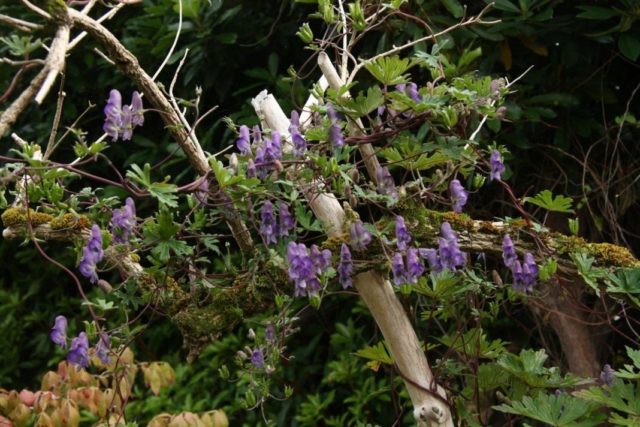
The most common use of a flower in a landscape is to place it along walls and fences, where it braids beautifully around the support.
A beautiful design option is to place the plant around the gazebos: curly aconite will braid the walls, decorating the structure with bright flowers.
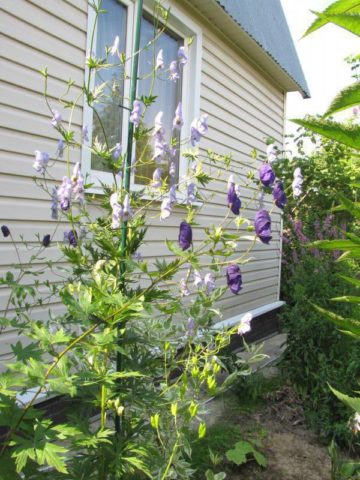
If you want to place a flower in the center of the garden, then you should provide it with support: a pillar or trellis, where the plant will be comfortable
With the use of curly aconite, mixborders can be created by planting it together with mallows or other tall flowers. In the foreground, in front of the wrestlers, it is recommended to place daylilies and hosts, garden daisies. The dignity of the flower and decorative yarrows will be emphasized.
Breeding features
Aconite curly can be propagated in several ways. The most time consuming of these is planting the seeds of the plant.

The seed must be stratified
Without the creation of a temperature regime and humidity, the germination rate of climbing aconite seeds sharply decreases.
The preparation procedure consists in sowing the material into the ground before winter, or in keeping them in a refrigerator in a container with earth. In April, the container with curly aconite must be moved to a warm place to stimulate the growth process.
As soon as 2 true leaves appear, the plant dives in separate pots. Seedlings are transferred to a permanent place only in August.
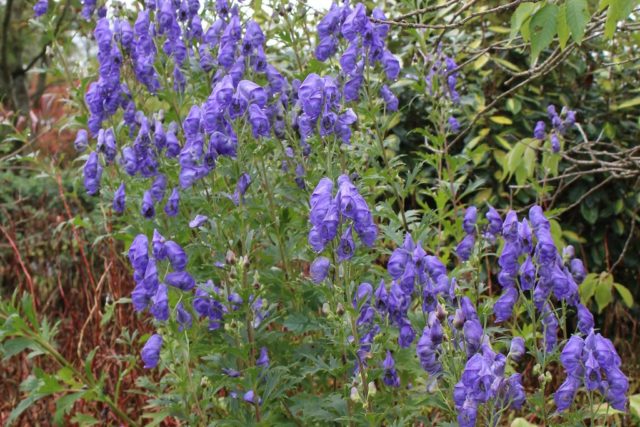
When sowing aconite curly with seeds, the first buds appear only 2-3 years after planting
If you need to propagate an adult plant, then every four years you can divide the bush. To do this, with a sharp knife or shovel, the curly aconite together with the rhizome is divided into several parts and transferred to a new place.
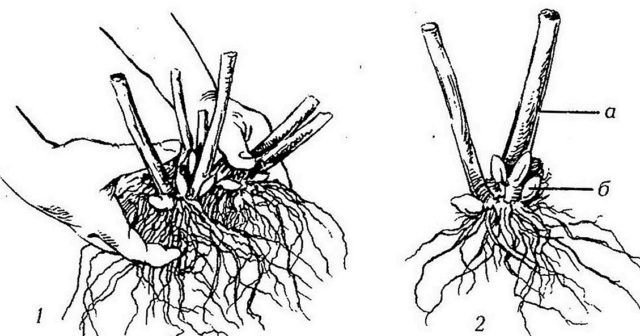
Pruning should be done so that each shoot has at least 3 buds
The root collar should be buried 2-3 cm into the ground.
Aconite curly and cuttings propagates. They should be cut in May and planted in a pot of earth to await rooting. It is recommended to cover the stems with agrofibre or foil.
Planting and caring for curly aconite
And although the plant is unpretentious, in order to achieve flowering, it is necessary to provide it with suitable conditions. Aconite climbing can be found in the mountains of Central Europe, where it prefers high-mountain, well-moistened meadows with fertile land. In Russia, it is cultivated exclusively for decorative purposes.
Recommended timing
The optimal time for planting is late August or early September. A young seedling needs shelter in the first winter. If a seedling needs to be transplanted, then it is better to plan the procedure in the spring so that the bush has time to take root.
Site selection and soil preparation
Aconite curly does not like the bright sun, therefore it is great for creating a shady garden. He should provide shade or partial shade.
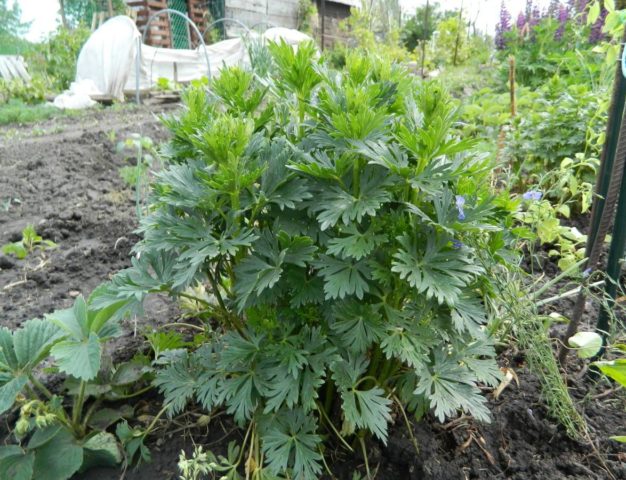
Gardeners often place a bush in the northern part of the site.
The wrestler grows well on substrates, but does not tolerate sandy soils and clay soil, crushed stone. The most abundant flowering can be achieved by planting a bush in soil rich in organic matter and moisture.
To avoid waterlogging the soil, sand or sawdust can be added to the planting hole.
Some gardeners prefer to sow seeds directly into the ground. Seedlings may appear only after a year. The procedure is carried out in the fall, placing the seed in the ground before winter.
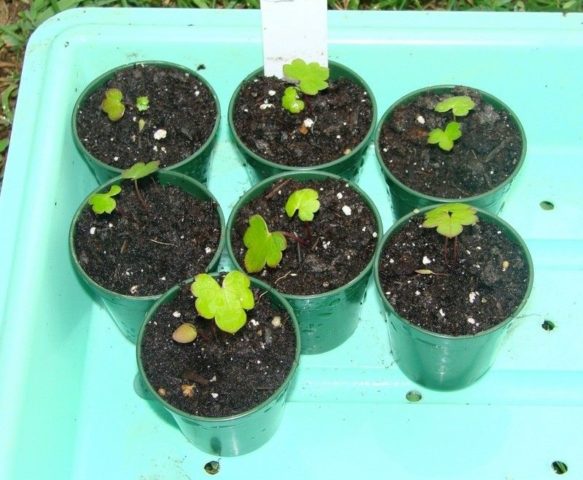
If the seedlings are ready for planting, then the plant is placed in a permanent place according to the scheme 25 * 25 cm
Landing Algorithm:
- Dig a hole so that the roots fit freely together with a clod of earth.
- Transfer the plant to a hole, cover with earth, slightly compact the soil around the seedling.
- Drizzle over the curly aconite.
Watering and feeding schedule
Agricultural technology does not require much time: curly aconite does not need constant attention.
During flowering and dry periods, it is required to prevent the soil from drying out. Do not overmoisten the soil: water should not stagnate at the roots.
When cultivating curly aconite, top dressing must be applied in stages:
- Use organic solutions in spring. To do this, dilute 2 kg of manure in 10 liters of water. Water at the root.
- During the formation of buds, add a solution of nitroammophoska (40 g per 10 l of water).
- During the flowering period, use phosphorus-potassium fertilizer.
If top dressing is applied dry, then the earth around the bush must be shed with water.
Loosening, mulching
The main requirement for the care of curly aconite is to ensure air permeability in the ground. To this end, gardeners regularly loosen the soil.
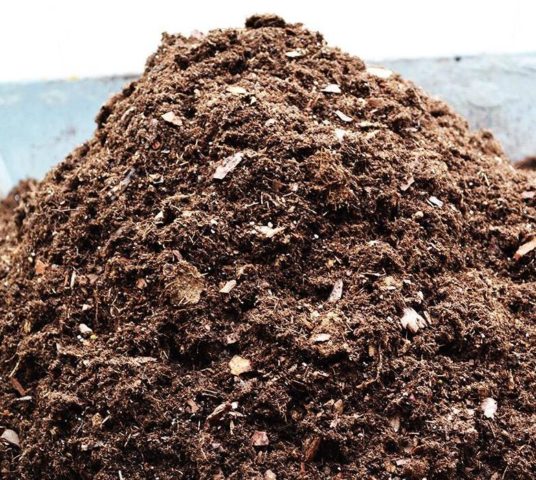
Alternatively, you can use mulch: a mixture of peat with sawdust
Support installation
The plant has strong stems, so it needs support. Usually gardeners pull the ropes so that the bush can crawl up on its own. But for the curly aconite, a stronger support is needed: it is recommended to build a trellis.

Alternatively, you can stretch a net, or position the plant close to a bush.
Flowering care
The buds of curly aconite bloom and fade one after another, which allows you to regularly admire the flowers. Withered inflorescences should be removed by carefully tearing or trimming them.
Diseased shoots and leaf plates should be destroyed outside the site so that the infection does not spread through the bush.
Preparing for winter
The wrestler is winter-hardy, so care for him in autumn is minimal. The top of the plant should be cut off. Cover the remaining rhizome of climbing aconite with spruce branches. Peat and later a layer of snow can be used as a substitute.
Pests and diseases
And although the wrestler is very poisonous, it does not scare off pests and bacteria. Often the bush is attacked by nematodes and slugs.
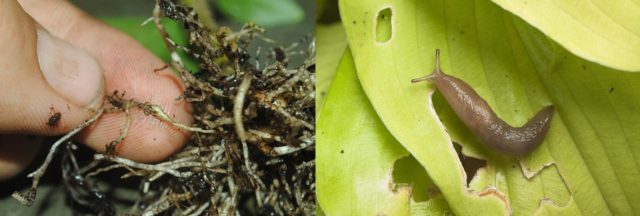
To get rid of nematodes and slugs, the aerial part of the bush should be treated with onion infusion or fungicides
When aconite curly is affected by powdery mildew, a white bloom appears on the leaf plates, and then on the flowers of the fighter. As the disease progresses, the color of the spots becomes brown. The plant is difficult to treat, it is recommended to destroy the bush.
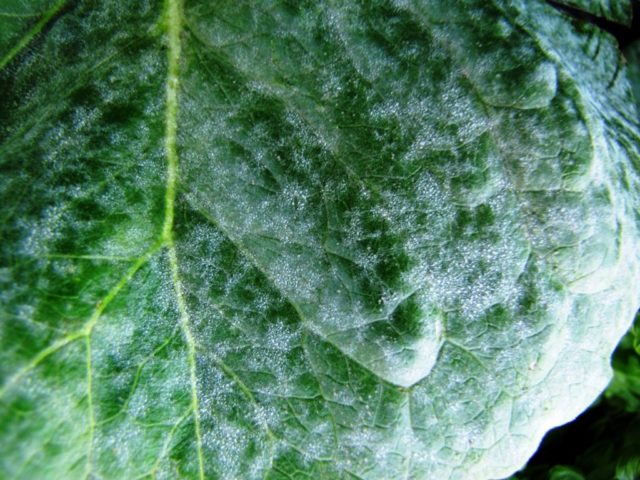
In the initial stages, you can treat the plant with drugs such as Quadris, Skor
Conclusion
Aconite curly is an ornamental perennial used to decorate the garden. The plant prefers shade or partial shade, goes well with tall perennials, needs support. Aconite is poisonous, when working with it you need personal protective equipment.
